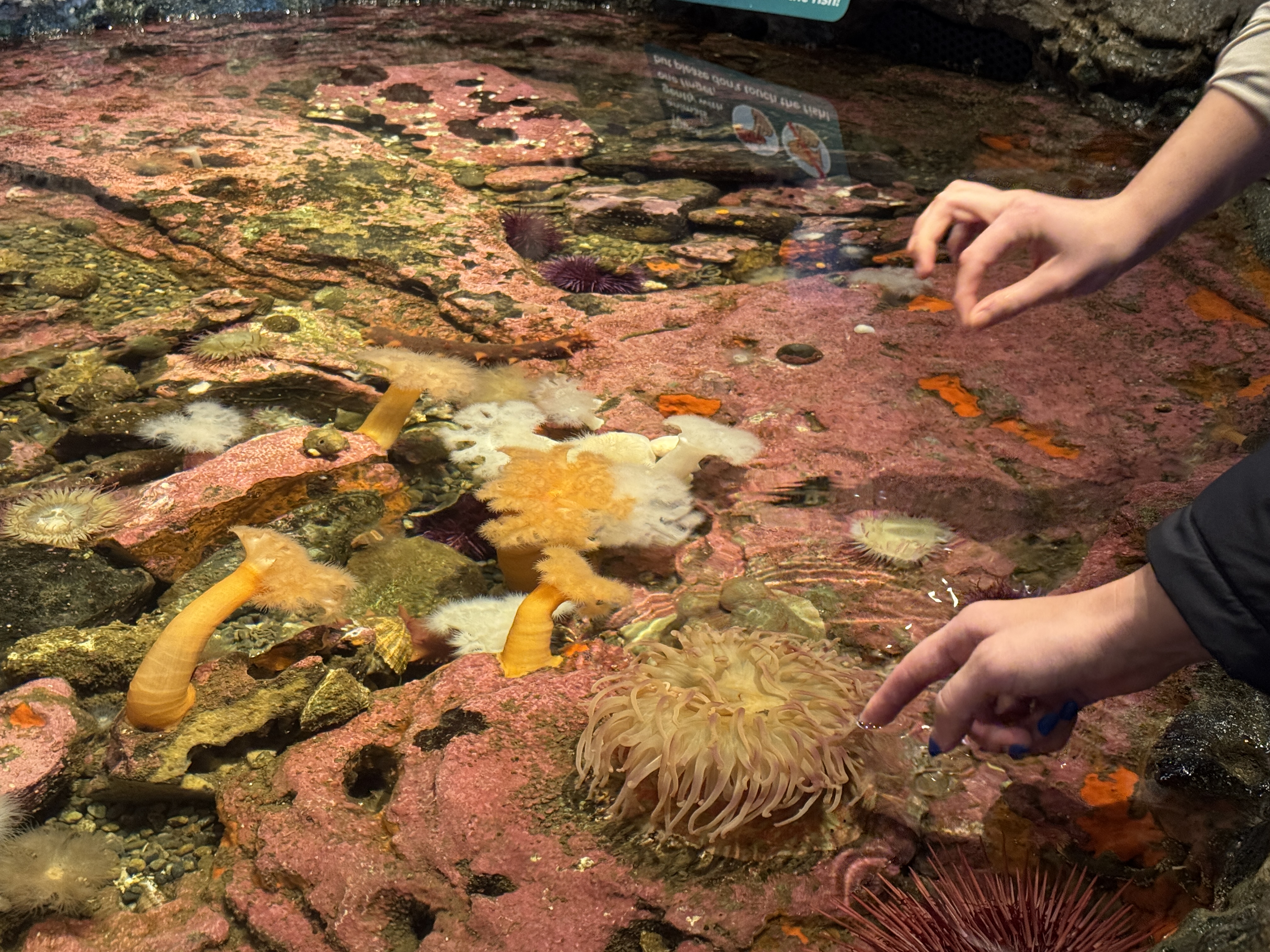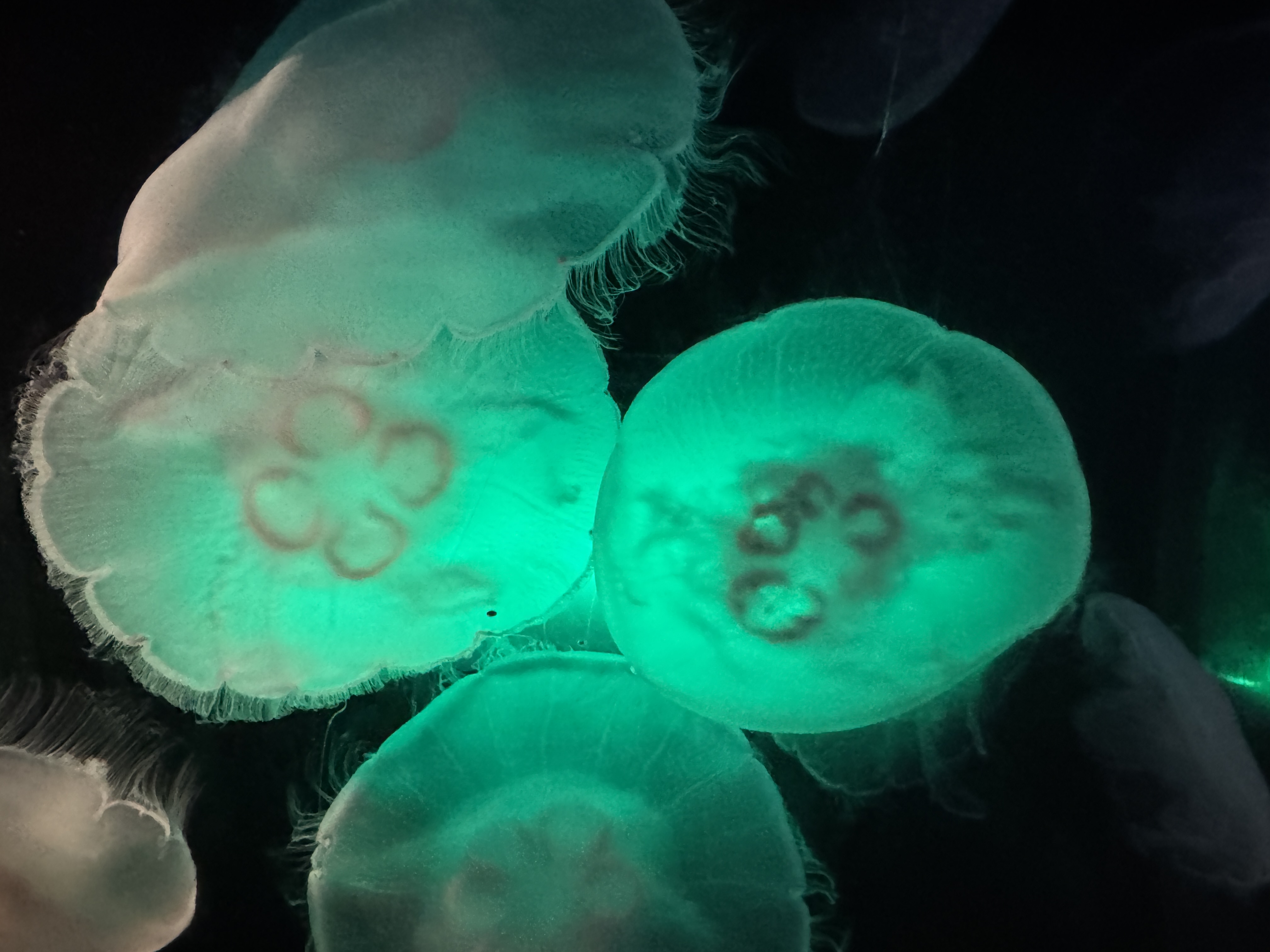Explore a tropical underwater wonderland at Seattle Aquarium’s new Ocean Pavilion
February 10, 2025 at 6:00 a.m.
If you can’t swing a trip to Hawaii or Bali this year and still want a tropical environment, head to the Seattle Aquarium’s new Ocean Pavilion. Here you’ll come face-to-face with a leopard shark, spotted eagle rays and a host of colorful tropical fish to put you in an island getaway mood.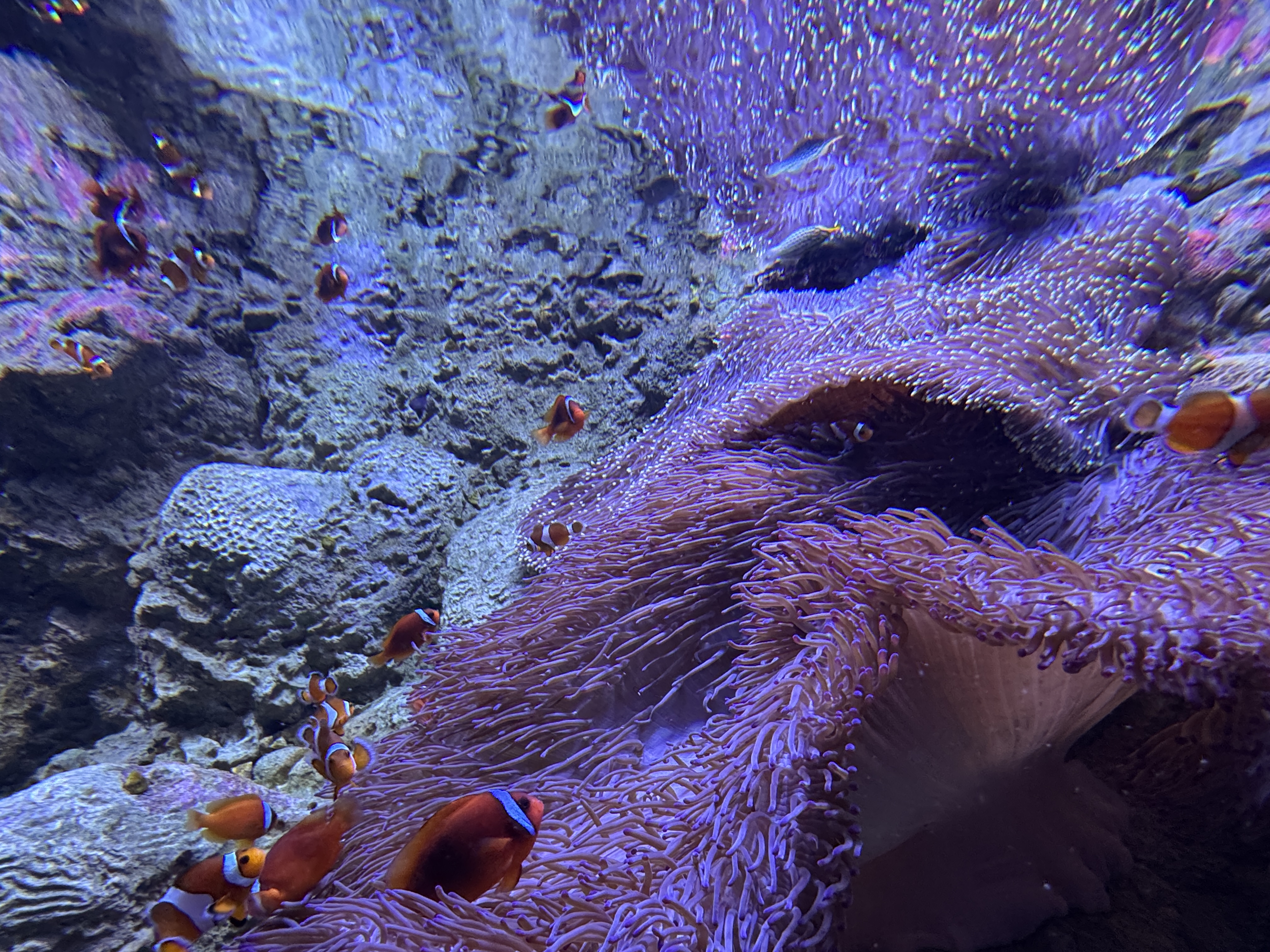
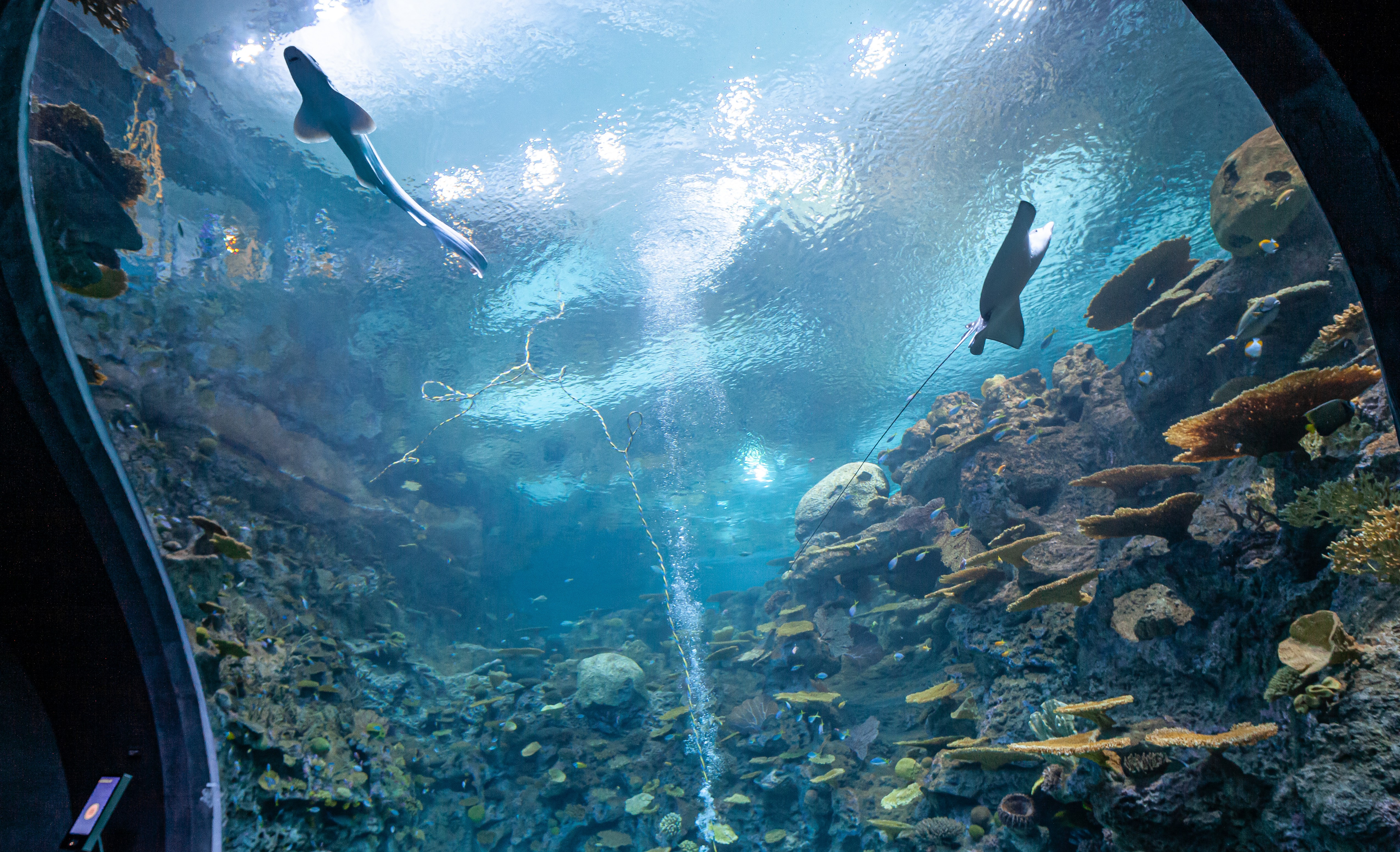
Photo courtesy of the Seattle Aquarium
The Ocean Pavilion houses 3,500 sustainably sourced tropical fish, invertebrates and plants, representing 100 plus species. They hail from various ecosystems of the Coral Tringle, a region so biodiverse it’s called the “Amazon of the ocean.” Its waters flow around parts of Indonesia, Malaysia, the Philippines, Papua New Guinea, the Solomon Islands and Timor Leste, boasting a surface area of 2.3 million square miles. And more than 600 reef-building coral species and over 3,000 species of reef fish are found here.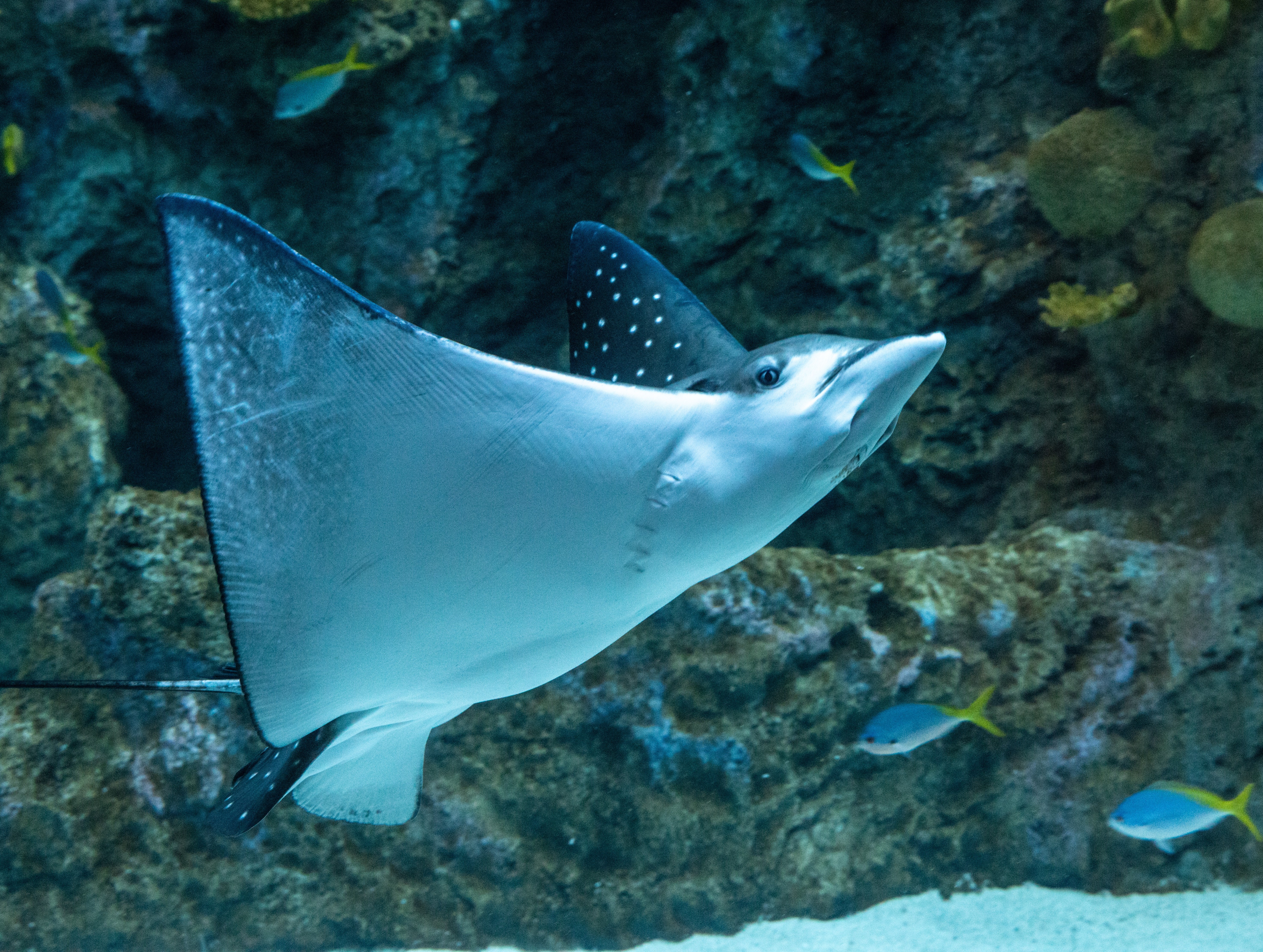
Photo courtesy of the Seattle Aquarium
When you walk towards the Pavilion’s entrance, look up for a sneak peek of the largest exhibit. Via an oculus or circular window, you’ll be able to see a reef ecosystem with a slew of fish. It’s a great way to get visitors psyched to enter the Pavilion. Or if you choose not to pay the admission, it’s a no-cost view into another world.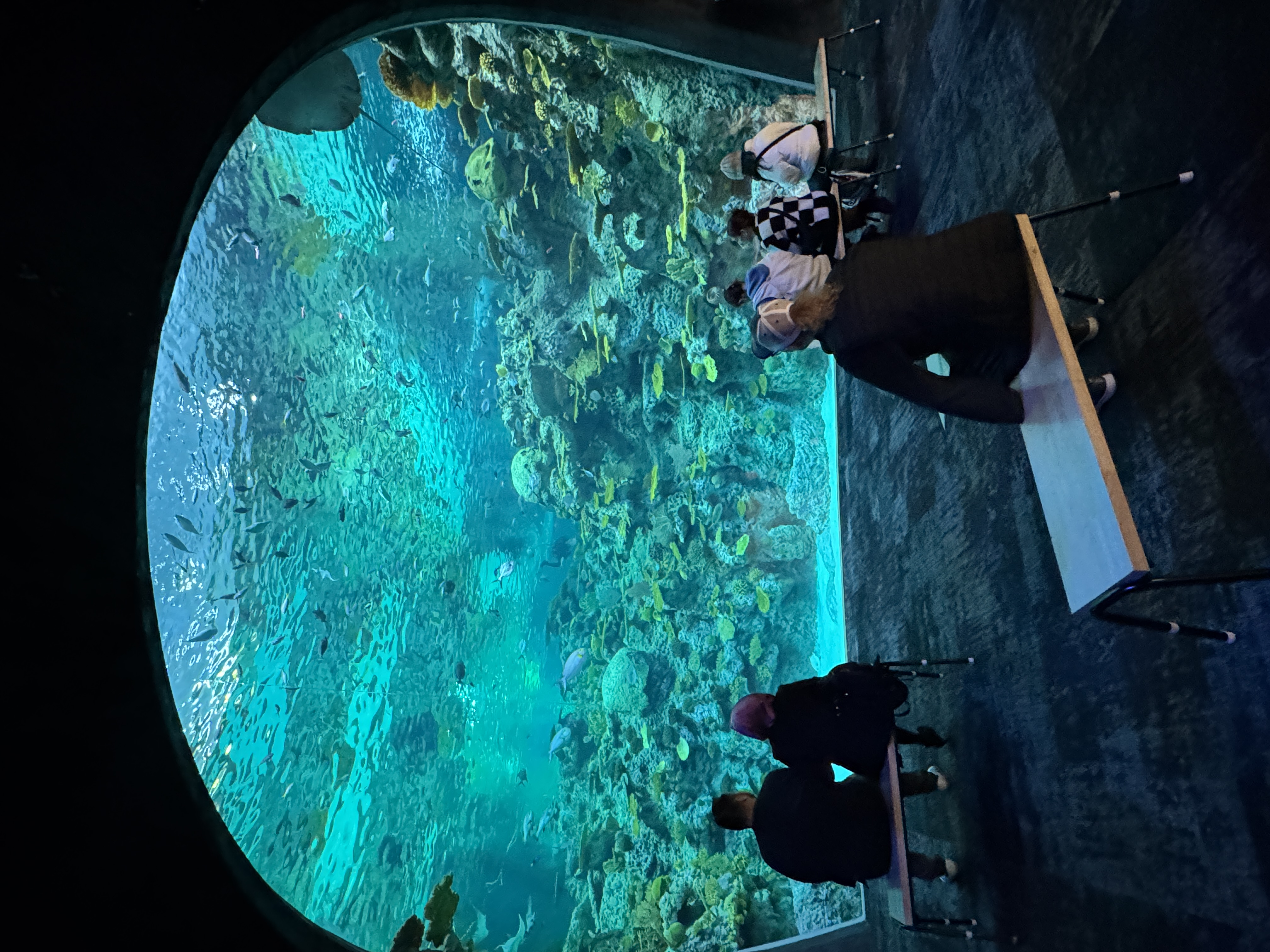

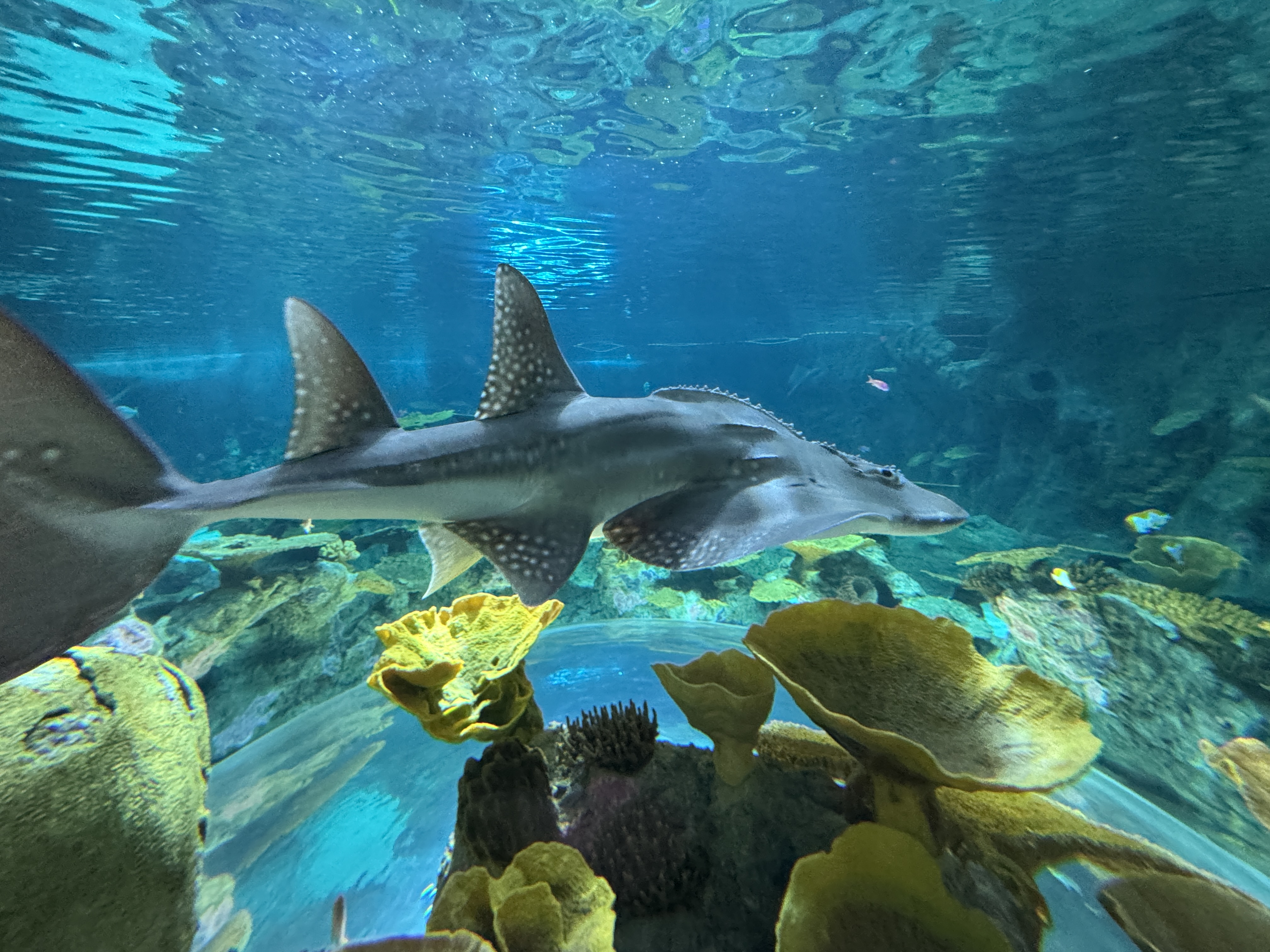
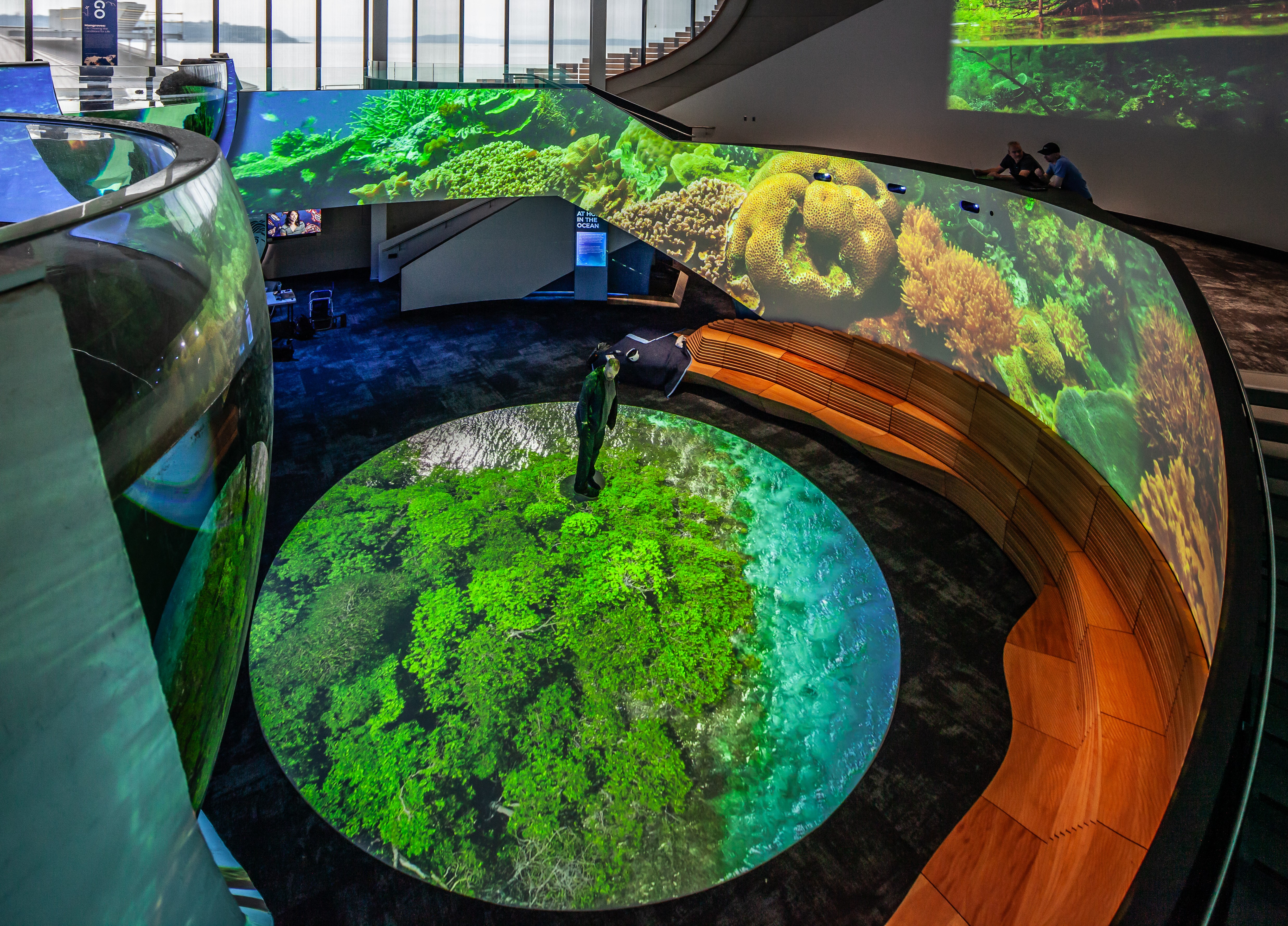
Photo courtesy of the Seattle Aquarium
It’s easy to spend much time sitting on a bench or glued to the glass beholding the wonders of this exhibit. Stick around for one of the talks or presentations given by Aquarium staff and volunteer interpreters. Don’t be surprised if you see a diver swimming around, equipped with a microphone to explain about ocean conservation and animal care.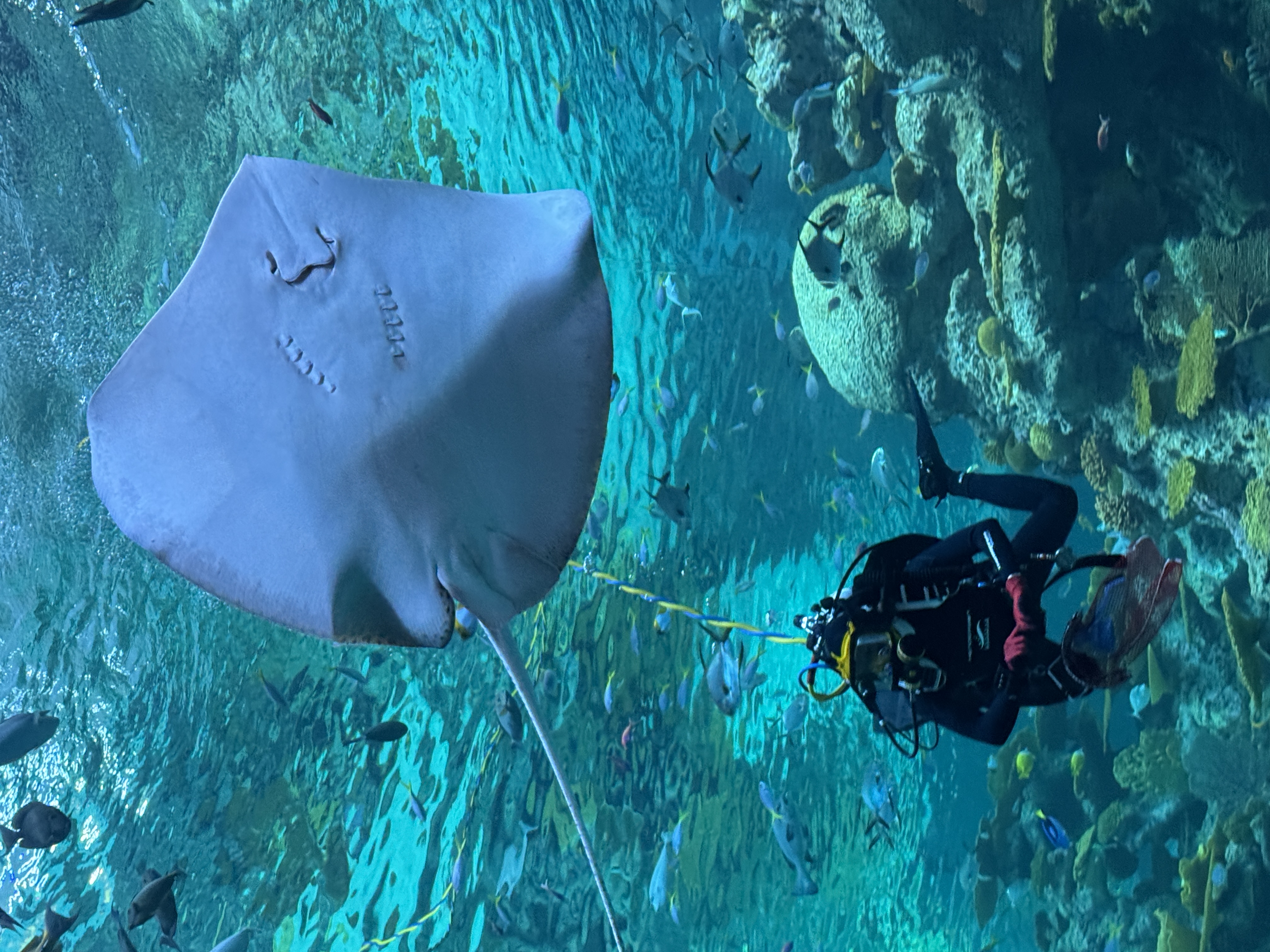
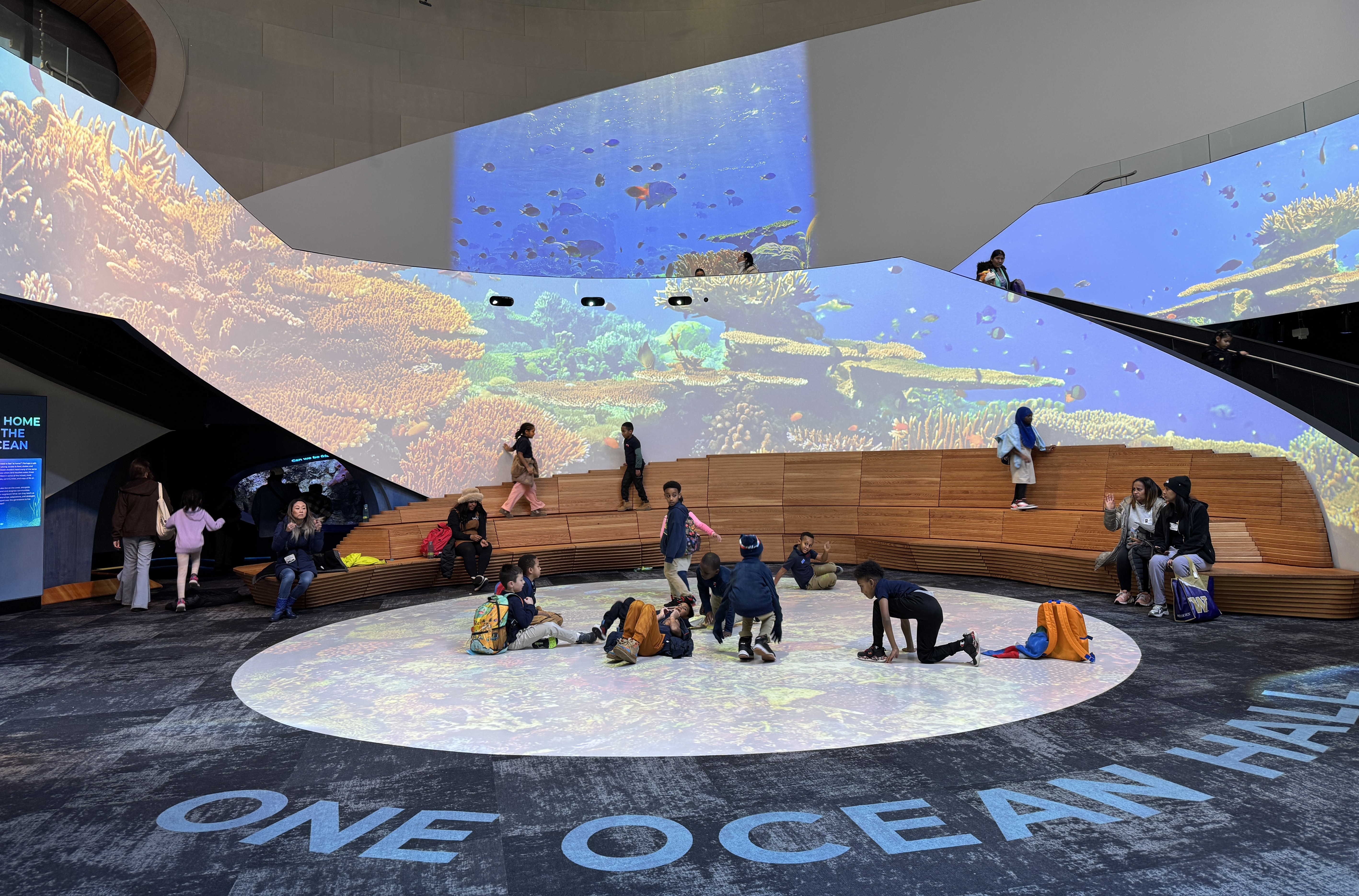
Nearby is “At Home in the Ocean,” another habitat area, where you can get an up close look at interesting species like clownfish, seahorses, vivid anemones and little garden eels popping up and down in the sand. There’s even a chocolate chip starfish!
Little ones will particularly enjoy exploring the “Coral Reef Encounter.” Here they can crawl through a colorful tunnel with interactive and tactile exhibits that show what it might be like to live on a coral reef. They can even see what it’s like to be a clownfish, all snuggled up within the tentacles of an anemone in a cushioned nook. Everything’s kid size and a touch screen outside the tunnel allows users to select the theme inside, change the lights and displays.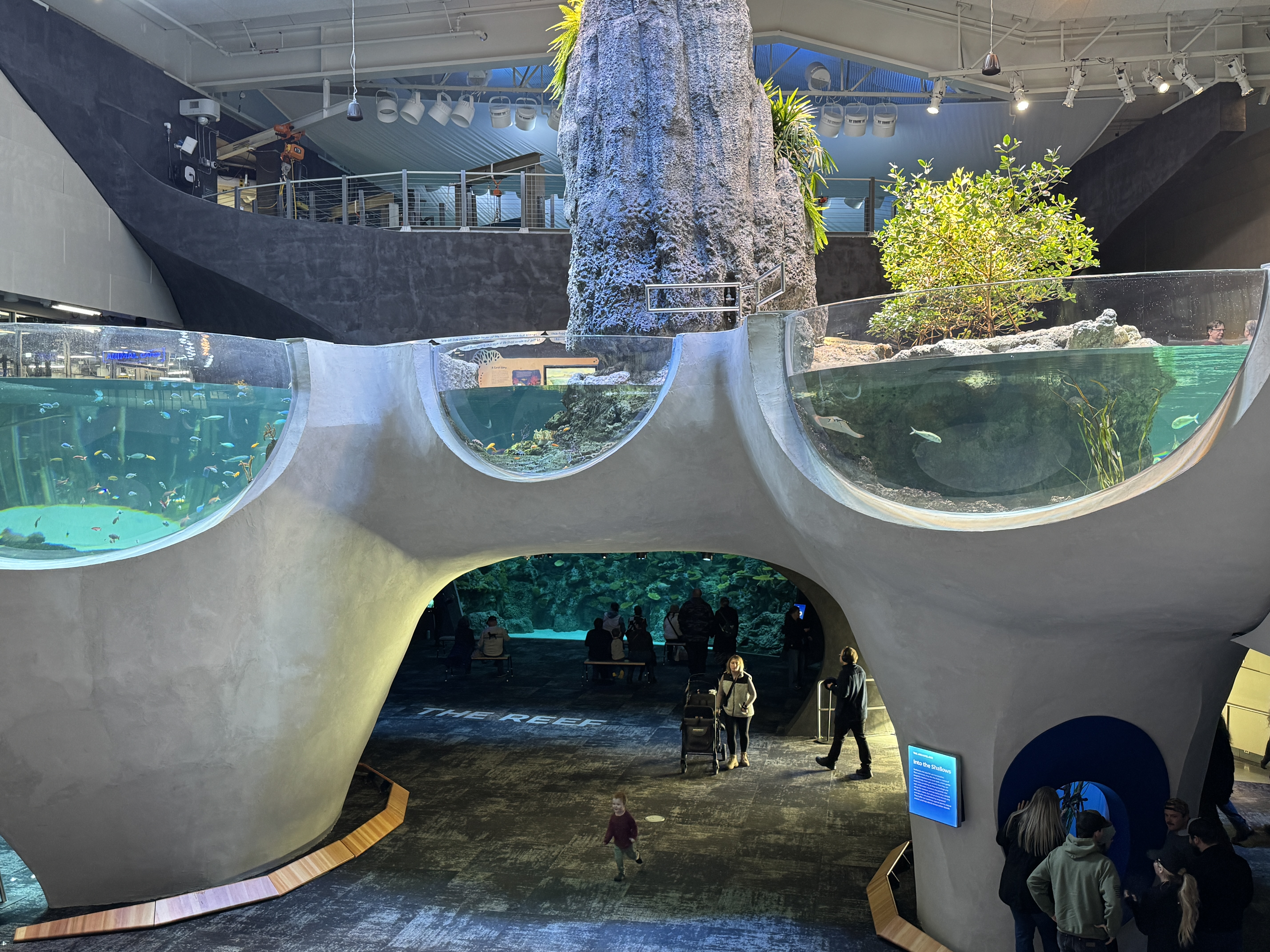
Also on the second floor is the Animal Care Center. Both are visible via windows and hopefully soon staff will give presentations about all that happens here. Meanwhile, you can watch the staff as they’re hard at work treating the creatures that live in the Pavilion without having to transport them elsewhere.
Connected to the Animal Care Center is the Jelly Nursery where visitors can see live jellyfish at all stages of development, floating within a blue water milieu.
Each of the habitat areas and displays in the Ocean Pavilion have touch panels to help you learn about their tropical occupants. And hands-on activity stations give you an appreciation for the importance of these habitats.
Throughout the building, you’ll find plenty of volunteer interpreters providing insight to visitors about caring for the numerous creatures and the upkeep of the habitats. These individuals are fonts of knowledge for any and all questions and are clearly passionate about helping visitors discover how we each have an important role in restoring ocean health.
The Ocean Pavilion is a significant element in the effort to revitalize Seattle’s waterfront. It connects famed Pike Place Market to the waterfront promenade with part of its roof serving as an elevated public park and walkway. Take the elevator or the stairs (for a cardio workout!) to enjoy the wonderful panorama of the city’s waterfront. Then stroll along the walkway with its garden of native plants and artwork. There are some fun slides and climbing areas for kids.